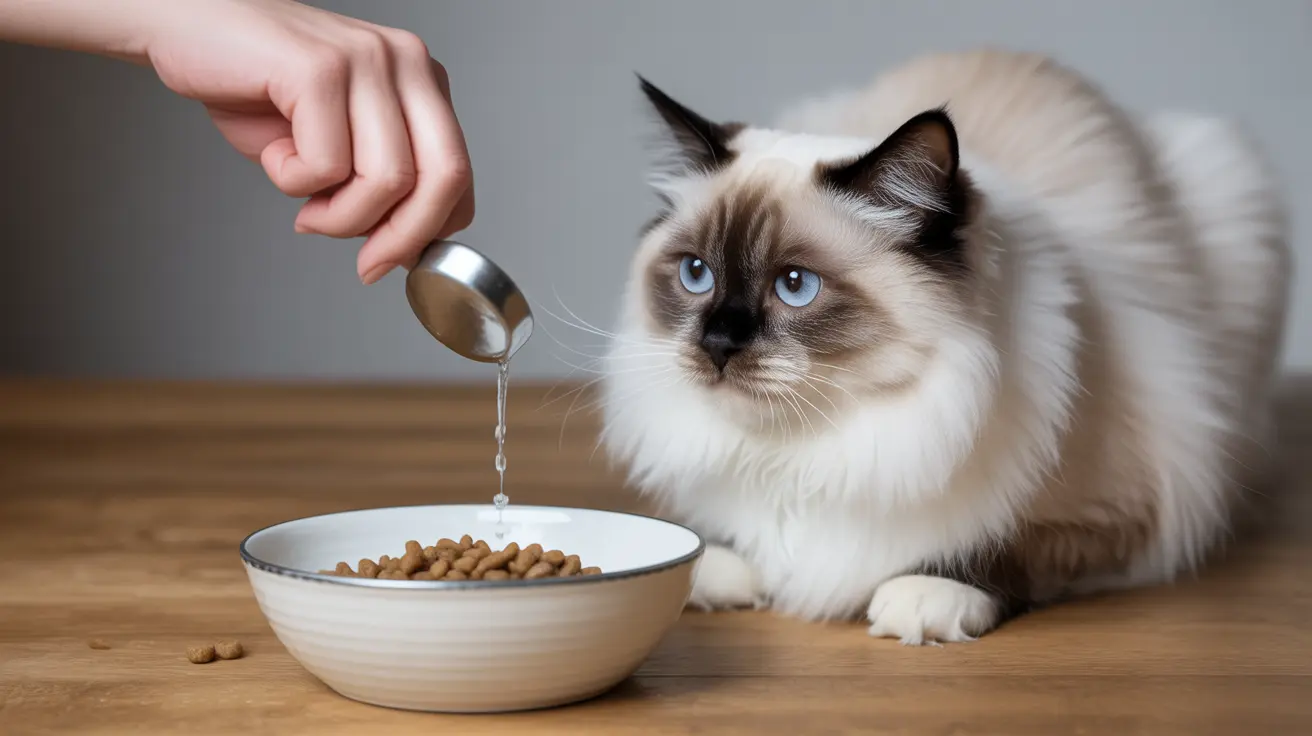Why Soften Your Cat's Dry Food?
There are several important reasons why you might need to soften your cat's dry food:
- Dental issues or oral pain
- Age-related chewing difficulties
- Kitten weaning process
- Post-surgical recovery
- Increased hydration needs
- Appetite stimulation
Safe Methods to Soften Hard Cat Food
Using Water
The simplest and most common method involves adding lukewarm water to dry kibble:
- Use a 4:1 ratio (kibble to water)
- Let stand for 10-15 minutes
- Check temperature before serving
- Adjust consistency as needed
Bone Broth Method
Cat-safe bone broth can add flavor while softening food:
- Use only pet-specific or homemade cat-safe broth
- Avoid broths containing onion, garlic, or excessive salt
- Mix with kibble and let stand for 10 minutes
Commercial Cat Gravy
Specially formulated cat gravies offer a nutritious softening option:
- Choose products specifically designed for cats
- Follow package instructions for mixing ratios
- Account for additional calories in daily feeding amounts
Best Practices for Food Safety
When softening cat food, always follow these important guidelines:
- Prepare fresh portions for each meal
- Discard uneaten softened food after 1-2 hours
- Use clean bowls and utensils
- Store dry kibble properly between uses
- Monitor food temperature before serving
Special Considerations for Different Ages
For Kittens
When softening food for kittens:
- Create a porridge-like consistency
- Gradually reduce water content as they grow
- Ensure complete food softening to prevent choking
For Senior Cats
Elderly cats may need special attention:
- Monitor acceptance of different consistencies
- Warm slightly to enhance aroma
- Consider mixing with wet food for easier transition
Frequently Asked Questions
How do I soften hard cat food safely for cats with dental problems?
Add lukewarm water to dry kibble using a 4:1 ratio (kibble to water). Let it stand for 10-15 minutes until the desired softness is achieved. For cats with severe dental issues, consider creating a smoother consistency by mashing the softened kibble.
What is the best way to soak dry cat food for kittens learning to eat solids?
For kittens, use warm water and create a porridge-like consistency. Start with more water initially, then gradually reduce the amount as they develop stronger chewing abilities. Always ensure the mixture is completely soft and at room temperature before serving.
Can I use water, broth, or gravy to soften my cat's dry kibble, and which is safest?
Water is the safest option. If using broth or gravy, only use products specifically made for cats. Avoid human broths or gravies, as they may contain harmful ingredients like onion, garlic, or excessive salt.
How long should I soak dry cat food before serving it to my senior cat?
Soak dry cat food for 10-15 minutes in lukewarm water. For senior cats, you may need to soak slightly longer to achieve a softer consistency. Always test the texture before serving to ensure it's comfortable for your cat to eat.
What are the health benefits of feeding softened dry cat food to picky or older cats?
Softened dry cat food can increase hydration, make eating more comfortable for cats with dental issues, and improve appetite in picky eaters. It also helps with digestion and can make the transition to wet food easier when necessary.
Conclusion
Softening hard cat food is a simple yet effective way to accommodate your cat's specific needs, whether they're young, elderly, or dealing with health issues. By following proper techniques and safety guidelines, you can ensure your cat receives proper nutrition in a form they can comfortably consume.
Remember to monitor your cat's response to softened food and consult with your veterinarian if you notice any changes in eating habits or digestion. With proper preparation and attention to detail, softened cat food can be a healthy part of your pet's daily diet.






